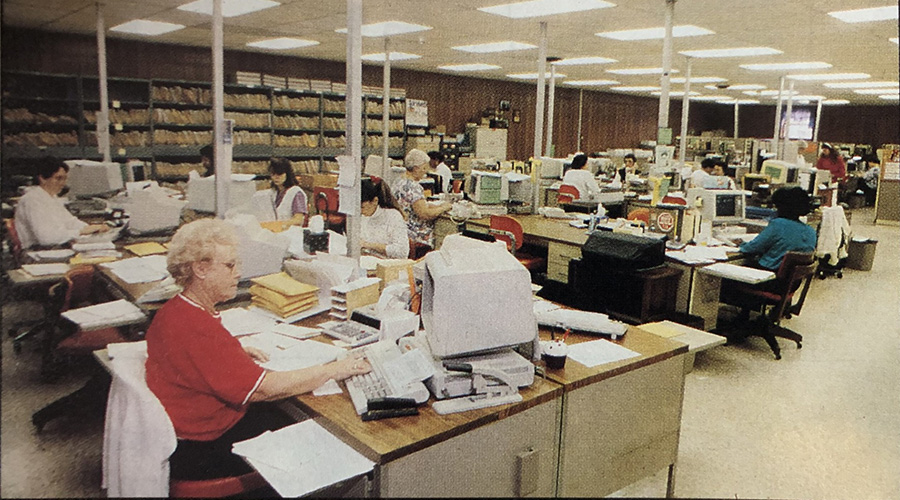Olympian Feat
The University of Utah’s plant operations department helped the campus ‘bring home the gold’ as Winter Olympics host
One could argue that there are few greater honors than hosting an Olympic Games. Certainly, it is the opportunity of a lifetime for any institution proud of its facilities. But with the prestige comes serious responsibilities, especially for those charged with ensuring that the host facilities efficiently and cost-effectively meet world-class standards.
Managers in the plant operations department at the University of Utah, which hosted the opening and closing ceremonies and the Olympic Village for the 2002 Winter Olympics, know all about the experience.
“It was really a wonderful experience, having the Olympics choose us,” says Pete van der Have, the director of plant operations for the university. “We definitely came out ahead as a university. They kept us busy, but it was worth it.”
Building for the Moment
New facilities have been the most obvious benefits to the university. For the opening and closing ceremonies, the university needed a larger venue than any facility already available. Thanks in part to $8 million from the Salt Lake Organizing Committee (SLOC), the local oversight body of the International Olympic Committee (IOC), the university renovated its football stadium to accommodate the ceremonies, a $52 million construction project.
“We had a lot of other very significant donors step up to the plate as a result of the (Olympic) contribution,” van der Have says. “This was such a major undertaking, we wouldn’t have been able to do it otherwise. We probably would have pieced the rebuild together over years. But people were proud to know the university was hosting (the Olympic ceremonies), and they wanted to make this happen.”
The renovated Rice-Eccles Stadium seats 46,000 fans, up from its original capacity of 34,000. For the Olympic ceremonies, facility staff added temporary seating to bring the capacity to 50,000.
In addition to a new stadium, the largely commuter campus gained a new student housing complex, a mixture of apartments and suites, which served as the Olympic Village during the games.
“We gained 1 million square feet of student housing,” says Norm Chambers, the assistant vice president of auxiliary services for the university. “We have room for 2,300 students, and (during the Olympics) we were able to house 4,000 athletes and coaches because they doubled up.
“Our campus housed maybe 10 percent of our student population in the past. Now, we’re closer to 15 percent. We’re still a commuter campus, but this was a significant change for us.”
The SLOC covered almost one-quarter of the cost for the $120 million Heritage Commons housing complex, which includes the Heritage Center student union for the housing residents. It paid the university $28 million to exclusively use the complex as the Olympic Village.
“This is a very nice living-learning community,” van der Have says. “They are really more like condos than dormitories. It’s a nice addition because, as the kids mature, they can move from one area of the campus to another.”
The center is upscale for student housing, he says, because the IOC dictated that the bedrooms be larger than those specified by the university — 120 square feet. The IOC also required a ratio of one bathroom fixture to every four athletes, so the complex was designed with fixtures for individual units, unlike many dormitory buildings that rely on common bathrooms.
The university intends both the stadium and the housing complex to be self-sufficient, so revenue from rent and ticket sales covers their operations and maintenance budgets. The plant operations department, which consists of about 600 employees often is contracted to do maintenance work at cost for the facilities.
But the financial structure minimizes the plant operations department’s responsibility for these new buildings. For example, the housing complex employs its own maintenance crew and calls on plant operations only for specialized work, such as high-voltage electrical jobs. And stadium officials hire private contractors to provide custodial services.
Ensuring Security
Besides gaining new facilities from hosting the Olympics, the university gained a new perspective on campus security and disaster planning. The games took place only six months after the terrorist attacks of Sept. 11, 2001, so security concerns were a critical component of planning for the arrival of athletes and spectators.
Planning for the Olympics actually began in early 1996 with the formation of the Olympic Steering Committee. Van der Have served as chair of a subcommittee, the Olympic Operations Committee, which was assigned to handling all non-academic issues relating to the Olympics, including transportation, parking, public safety, law enforcement and security.
“This eventually became a full-time job for me during the last year prior to and through the games — while still doing my regular job,” van der Have says.
The university worked with the Secret Service, the U.S. Department of Defense and other federal, state and local law-enforcement agencies to ensure safety during the games. For example, the university installed security fencing around the Rice-Eccles Stadium and the Olympic Village. Those involved debated the location of the fencing for months prior to installation.
“This was particularly tricky because they wanted a 100-yard buffer between the fence and the closest Olympic facility,“ van der Have says. “If that had been done, it would have closed down major roadways and pedestrian paths, even while students were attending classes. There was some serious give and take on this, which became more serious after 9/11.”
During the preparations, the university put in place an emergency-response plan, which called for coordination among all key campus departments, including the police, the university hospital, commuter services, and maintenance. Those departments also were required to staff an emergency operations center around the clock during the Olympic events.
Today, the same team, including staff members from the various departments, meets regularly to plan for potential disasters in exercises designed to ensure smooth response to an actual disaster.
“A week ago, we simulated an earthquake, and we all participated in the response to the earthquake,“ says van der Have. “We all had something to do, and the practice helps iron out any kinks. Really, we have a much greater awareness of how to deal with a disaster now that we’ve been through the Olympics experience.”
Fortunately, the worst event to happen during the games was a demonstration by protesters who aimed to disrupt the opening ceremony. Local police learned of the protest in advance, however, and headed off the demonstrators before they reached the stadium. Because it was handled without incident, the protest received little press.
Returning to Normal
Given the fact that more than 55,000 additional people visited the campus during the games, it is no surprise that the campus clean-up was extensive.
“The biggest challenge was restoration of the facilities,” van der Have says. “We’re grateful that (the games) made money, because, all in all, they did a pretty good job restoring stuff to original condition and repairing damage on campus. Other places were not as lucky, when the games didn’t make money.”
The SLOC spent $500,000 on restoration and repair, van der Have estimates. Among the most significant repairs:
- Once security fences came down, crews removed the fence posts. Some were secured in concrete, so crews had to replace entire slabs.
- Sod, landscaping, some trees and sprinkler systems were replaced in locations where they had been removed or damaged as a result of temporary structures.
- Entire parking lots were repaved after the Olympic staff removed their trailers. Each trailer had been anchored down with a minimum of eight 3-foot spikes, per the request of Olympic staff.
- Temporary utility lines were removed, as was the concrete Olympic Medals Plaza at the stadium.
- Temporary walls, installed to divide living rooms into extra bedrooms for the athletes in the Heritage Commons housing center, were removed.
- An entire floor of the brand-new University Guest House, an on-campus hotel, was restored to its original condition. It had been converted into a medical clinic for the athletes. That cost alone was $1 million, above and beyond the rest of the expenses.
Even with the financial back of the SLOC, van der Have says restoration was no easy task. His department had to continue working with the Olympic organizers, who were not obligated to follow the same practices and standards established by the university for facility maintenance. It was “like dealing with two totally different contractors,” he says.
But van der Have says the process was less daunting than expected because most of the damage was the result of preparing the campus to meet Olympic standards, so it was anticipated. “I think all of us admit that there was surprisingly little damage caused by the participants in the games or by the spectators,” he says.
The university’s focus now has turned to ensuring that the new facilities and the remaining Olympic structures are put to good use. Recently, the university converted the Olympic cauldron to a fountain, which is the central feature of the new Olympic Cauldron Park adjacent to Rice-Eccles Stadium. The Hoberman Arch, which framed the Olympic Medals Plaza, has joined the cauldron in the park. The metal structure stands 36 feet tall and 72 feet wide. Visitors to the park can now stand beneath it, just as the winning athletes did.
The Salt Lake 2002 Visitors Center — which now features a three-screen cinema showing Olympic films and an art gallery full of Olympic photographs — has been re-opened to the public, as well.
“We are trying to make sure we not only fill up the space, but that we use it well,” Chambers says. “We want to assimilate the buildings, but we also want to preserve the memories.”
Related Topics:











